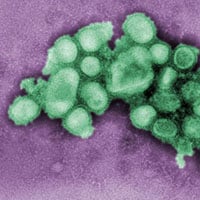Tackling the H1N1 Flu Pandemic Through the Rapid Detection of the Novel H1N1 Virus

CDC scientists Stephen Lindstrom, Bo Shu, Shannon Emery, and LaShondra Berman developed a real time RT-PCR assay for the detection of the novel H1N1 virus. The assay provides oligonucleotides that are designed to specifically detect H1N1 influenza signatures, and also an Influenza A subtyping panel of signatures. The technology was licensed to Biosearch Technologies, and was commercialized as the 2009 H1N1 (Novel Influenza A) ValuPanel™ and PDM 2009 H1N1 (Novel Influenza A) ValuPanel™. The panels are commercially available in countries across Africa, Asia, Europe, the Middle East, and North and South America. The technology was also licensed to Life Technologies, and is commercially available as the Pandemic H1N1/09 Assay Set v 2.0. The product is available in Malaysia, India, Ecuador, Czech Republic, Brazil, Vietnam, Thailand, Romania, Israel, Morocco, Lebanon, Jordan, Italy, Portugal, Chile, and the Philippines.